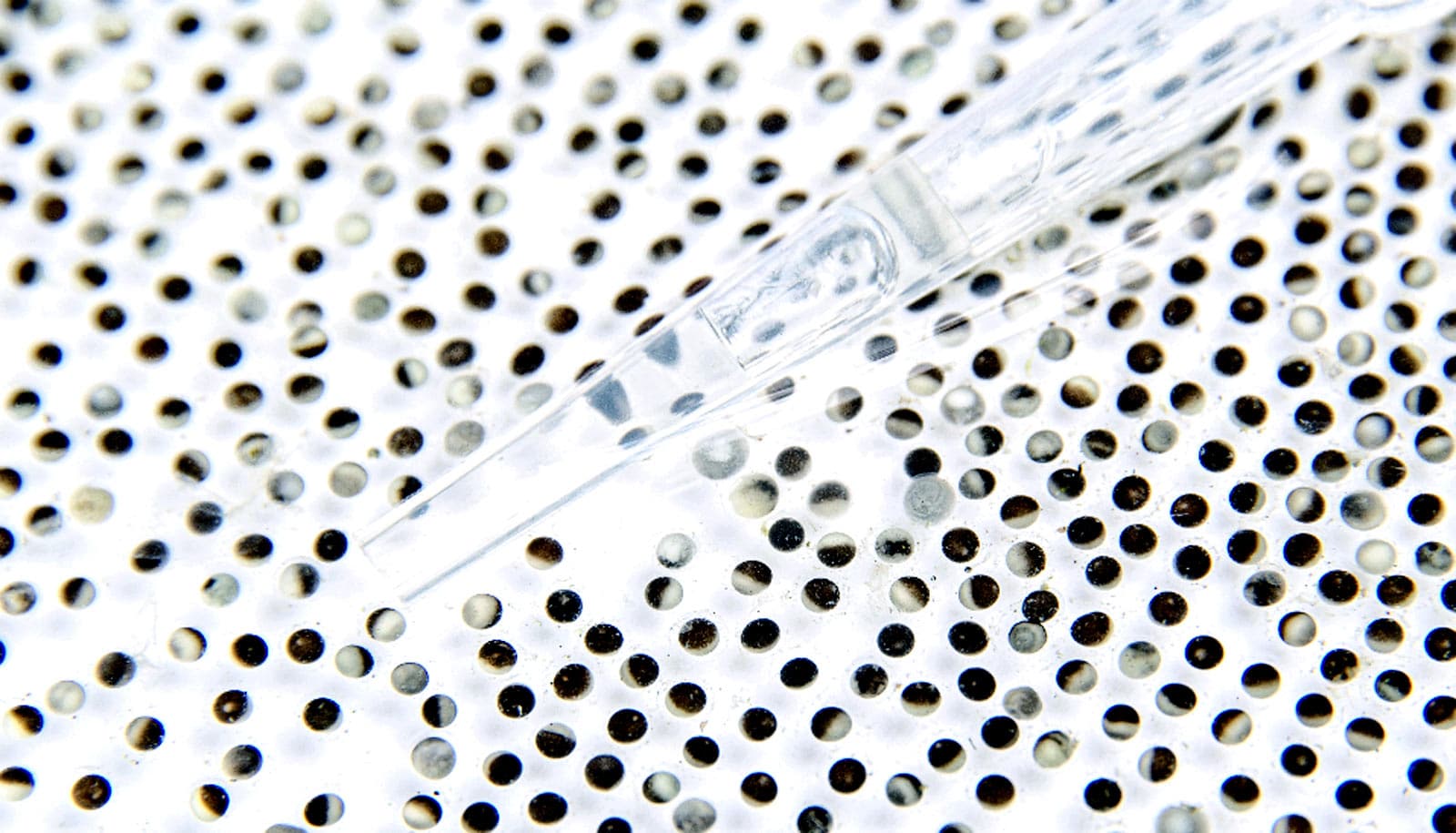Researchers have uncovered some of the pathways cells use to repair DNA damages.
The body’s DNA is subject to constant damages and lesions, which the body must repair. But researchers haven’t precisely established how the body does this.
Harmful DNA lesions may occur in a number of ways and can both be a result of internal and external factors. The type of damage the researchers studied is called DNA-protein crosslinks, a type of damage that’s very difficult to study. To do so, the researchers prepared protein extracts from frog eggs, which recapitulates the repair of the lesion in a test tube. These extracts contain the same proteins that are in human cells, and therefore represent a good model to study these lesions.
“It is vital to understand how these damages are repaired, because if they are not corrected, the body will develop cancer and accelerated aging. But it is also central knowledge with regard to cancer and chemotherapy,” says study coauthor Julien Duxin, an associate professor from the Novo Nordisk Foundation Center for Protein Research at the University of Copenhagen.
“Most chemotherapeutic agents deliberately induce these kinds of damages. If we are able to understand how the damages are repaired, we can use that knowledge to develop a form of combination treatment, where we induce damage, on the one hand, and inhibit the cancer cells’ repair hereof, on the other. This would give us a more efficient way of killing cancer cells,” Duxin says.
DNA damage inhibits cell division, and that is also how many forms of chemotherapeutic agents kill cancer cells. The researchers have discovered two methods or pathways used to mend DNA-protein crosslinks. At the same time, they’ve established how DNA replication triggers these repair processes.
Duxin compares DNA replication to a motorway and a lesion to a roadblock or a large rock in the middle of the road. For DNA replication to take place and be successful, the roadblock must first be removed.
“Cancer cells divide faster than normal cells and therefore require more DNA replication. They are therefore very sensitive to damages that disturb the replication process. However, DNA replication can also trigger damage repair. For example, you can compare DNA replication to a motorway filled with cars. If you place a rock in the middle of the road, where no one drives, no one will notice the rock. But if you are on a road that is blocked, you will realize that there is a problem that requires solving,” says Duxin.
Cancer cells are clever and often find a way to repair themselves. For example, chemotherapy for one type of cancer cells may work for a period of six months and then stop working because the cancer cells have found a new way of removing and repairing lesions. Therefore, the next step for the researchers is to continue to study these lesions and seek to identify more pathways in which they are repaired. They focus especially on the types of DNA damages that occur during chemotherapy and how they are repaired.
The research appears in the journal Molecular Cell. Funding for the study came from the European Research Council under the EU research and innovation program Horizon 2020, the Novo Nordisk Foundation, the Center for Integrated Protein Research Munich, the German Research Foundation DFG, the American Cancer Society via a postdoc scholarship, the Damon Runyon Fellowship, and the National Institute of Health.
Source: University of Copenhagen



